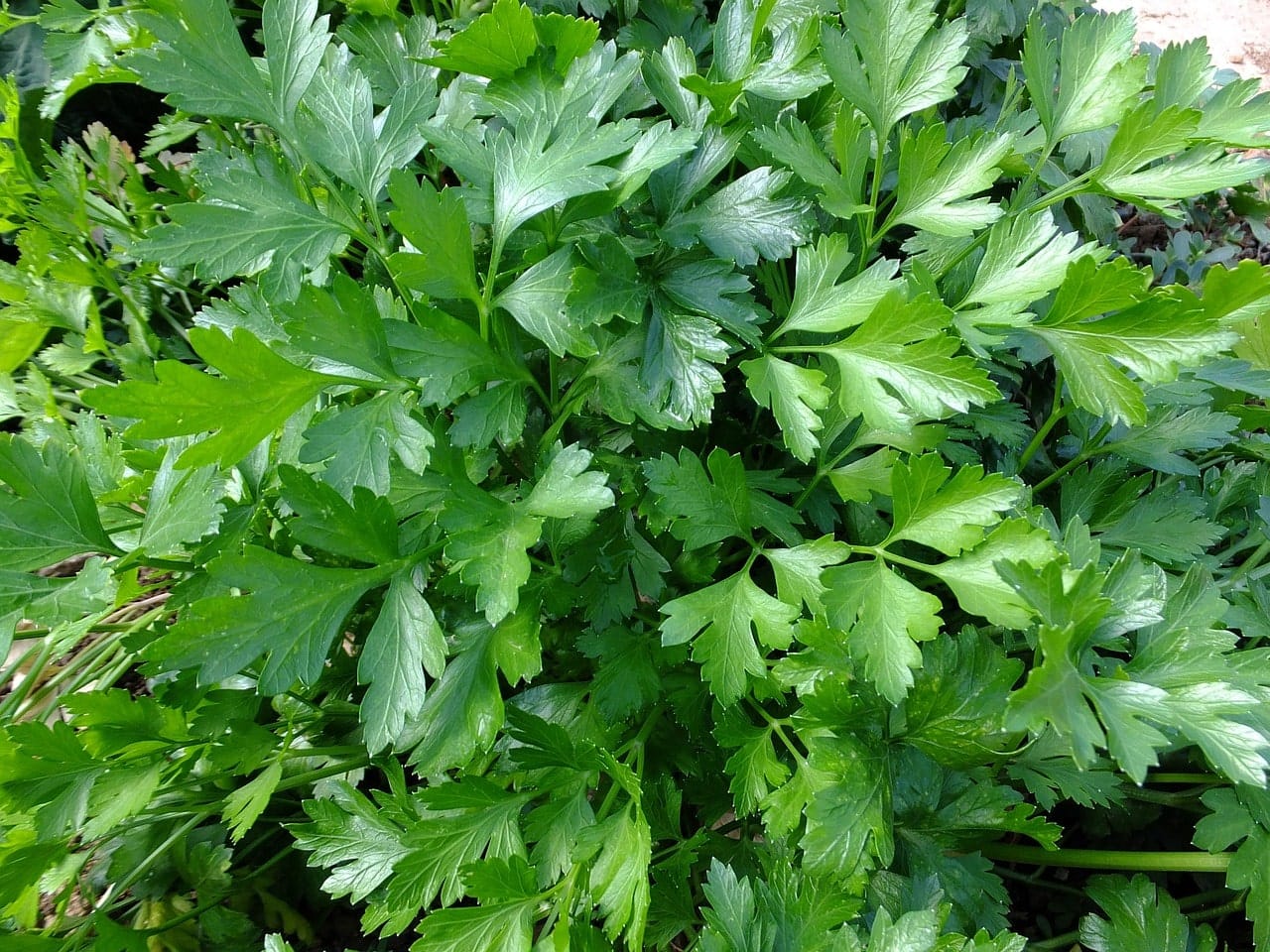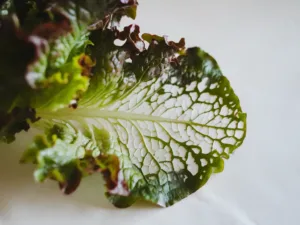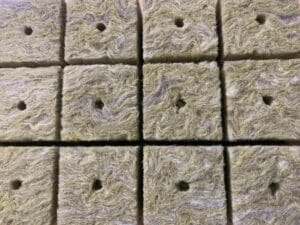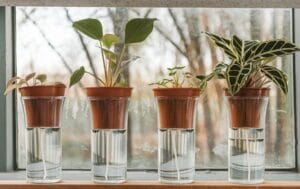Parsley is a true culinary multitasker—whether flat-leaf or curly, it adds that special touch to many dishes. But why grow parsley hydroponically? Simply because it offers many advantages! Parsley grows faster and healthier in a hydroponic system than in soil. Free from soil-borne diseases and pests, the plants thrive and provide fresh, aromatic leaves year-round. You no longer have to worry about parsley wilting on your windowsill or being eaten by snails in the garden.
Another advantage of the hydroponic method is the control over nutrient supply. Parsley loves to grow in a perfectly balanced environment—and that’s exactly what you can provide with hydroponics. No hassle with unbalanced soil values or bad weather. With the right care and optimal conditions, your parsley will explode with growth in the hydroponic system. Doesn’t that sound exciting?
The Best Parsley Varieties for Hydroponics
Not every parsley variety is equally suitable for hydroponic cultivation. If you want to get the most out of your indoor garden, you should choose the right variety. The three most popular varieties for hydroponics are Curly Parsley, Flat-leaf Parsley, and Italian Giant. Each variety has its own strengths and is suitable for different tastes and uses.
- Curly Parsley: This variety is especially popular for its decorative, curly leaves. It grows compact and dense, making it ideal for smaller hydroponic systems. Its flavor is mild, and it is excellent as a garnish or for fresh salads.
- Flat-leaf Parsley: Also known as “Italian Parsley,” this variety has a stronger aroma. It grows taller than Curly Parsley and therefore needs more space. Its intense flavor makes it perfect for sauces, soups, and stews.
- Italian Giant: As the name suggests, this variety is a giant among parsley. It has larger leaves and an even more intense flavor than the flat-leaf variety. It requires a bit more space and care but rewards you with an especially abundant harvest.
If you value a rich harvest and intense flavor, the Italian Giant might be the right choice for you. For a decorative garnish or milder taste, Curly Parsley would be the best option.
| Variety | Growth Form | Flavor | Suitable for |
|---|---|---|---|
| Curly Parsley | Compact | Mild | Garnish, Salads |
| Flat-leaf Parsley | Taller | Intense | Sauces, Soups, Stews |
| Italian Giant | Large-leaved | Very intense | Versatile uses |
Suitable Hydroponic Systems for Parsley
Parsley can be successfully grown in various hydroponic systems. The choice of the right system depends on your space, budget, and experience level. Three popular systems for growing parsley are Nutrient Film Technique (NFT), Deep Water Culture (DWC), and the Ebb and Flow system.
- Nutrient Film Technique (NFT): The NFT system is ideal for herbs like parsley. It uses a thin nutrient solution that constantly flows along the roots of the plants. This promotes rapid nutrient uptake and fast growth. The system requires little space and is energy-efficient, but it requires constant monitoring to ensure optimal circulation of the nutrient solution.
- Deep Water Culture (DWC): In a DWC system, parsley plants grow in a container where the roots are submerged in an oxygen-rich nutrient solution. This method is particularly suitable for beginners as it is easy to set up and maintain. Parsley thrives in DWC systems because it is constantly supplied with oxygen and nutrients.
- Ebb and Flow System: This system is a bit more complex but offers very good control over nutrient supply and moisture. It regularly floods the plants with a nutrient solution and then drains it away. Parsley benefits from this method as it receives a consistent supply but can also “breathe” between waterings.
Each system has its own advantages and disadvantages, and it depends on your specific needs which system is best for you. For beginners, DWC and NFT systems are ideal, while the Ebb & Flow system is a good choice for experienced gardeners looking for more control over their plants.
The Perfect Start for Your Parsley Plants
Growing parsley hydroponically can be challenging due to the often longer germination time of the seeds. However, with the right preparation and a few tricks, you can achieve a high germination rate and strong seedlings. Start by selecting high-quality seeds suitable for hydroponic cultivation. Seeds specifically bred for controlled environments generally have a higher germination rate.
An important step is pre-sprouting the seeds in germination boxes or starter cubes like rock wool or coconut fibers. These substrates provide the seeds with a stable environment in which to germinate. Ensure the seeds are placed in a moist but not overly wet environment. Parsley requires some patience—germination can take between 14 and 28 days. Soaking the seeds in warm water overnight before sowing can help speed up germination.
Once the seedlings reach a height of about 5 cm and have developed at least two true leaves, they can be transplanted into your hydroponic system. Be careful when introducing the young plants into the system to avoid damaging the delicate roots. In the first few days after transplantation, closely monitor the system to ensure the plants establish well and are not stressed by strong light or nutrient fluctuations.
| Factor | Ideal Conditions |
|---|---|
| Germination Temperature | 18-22°C |
| Humidity | 50-70% |
| Light Hours | 12-14 hours (post-germination) |
| Substrate | Rock wool, Coconut fibers |
| Pre-treatment | Soaking seeds in warm water (12h) |
The Right Foundation for Robust Parsley Plants
Choosing the right substrate is crucial for the success of your parsley in hydroponics. Since parsley develops a dense root system, the substrate should not only be stable but also well-aerated. Rock wool, coconut fibers, and perlite are some of the best options for growing parsley.
- Rock Wool: A classic in hydroponics, rock wool offers excellent water and air retention. It is particularly suitable for germination and the early growth phase. However, rock wool can degrade over time in the system and may need replacement.
- Coconut Fibers: Coconut fibers are an eco-friendly alternative to rock wool, offering good water absorption and air permeability. They do not decompose as quickly as other substrates and are reusable if well-maintained. Ideal for parsley, as they adequately support the roots while allowing for air exchange.
- Perlite: This substrate is especially light and provides excellent drainage and aeration for the roots. It is often used in combination with other substrates like coconut fibers. Parsley benefits from the loose structure, allowing its roots to grow quickly.
The right substrate depends on your specific conditions and preferences. A substrate mix, such as coconut fibers with perlite, can be a good solution to combine the advantages of multiple substrates and optimally support the plants.
Optimal Temperature and Climate Conditions
Although parsley is a relatively robust plant, like all plants, it has specific environmental requirements to reach its full potential. Temperature plays a crucial role. Parsley prefers a moderate temperature between 18 and 24°C. These temperatures are ideal for promoting strong growth without stressing the plants. At too high temperatures above 30°C, parsley may start to wilt, and growth will be inhibited.
The humidity should be around 50-70% to ensure optimal conditions. Too low humidity can dry out the plants, while too high humidity increases the risk of fungal diseases. Good air circulation is also important to avoid mold and other issues. Use fans or special air circulation systems to create a constant, gentle breeze.
Especially in indoor gardens, it is important to create a stable microclimate. Controlling temperature, humidity, and air circulation not only ensures healthy parsley but also promotes vigorous growth and a rich harvest. Remember: A thermo-hygrometer for monitoring these factors is an indispensable tool for anyone looking to grow parsley hydroponically.
How Much Light Does Parsley Really Need?
Parsley loves it bright! It is a light-loving plant that requires about 12 to 14 hours of light per day for healthy growth. The light intensity is just as important as the duration. Parsley needs a lot of light to grow strong and aromatic, which is why LED grow lights are the best choice for hydroponic cultivation. They are energy-efficient and provide the right light spectrum necessary for photosynthesis and growth.
A high-quality LED light should provide both blue and red light, as these spectra are crucial for growth. Blue light promotes vegetative growth, resulting in denser, bushier plants, while red light supports photosynthesis, thereby improving overall plant growth. Make sure the lights are installed at an appropriate distance of about 20-30 cm from the plants to avoid light stress and ensure even light distribution.
However, too much light can also be detrimental. Parsley can suffer from light stress with too high light intensity or too long exposure times, leading to burnt leaves and slowed growth. A good tip is to use a timer to control the lighting duration, ensuring optimal conditions for your parsley plants. With the right lighting, you can ensure your parsley grows strong, healthy, and full of flavor.
PH & EC Levels: Key Factors for Healthy Growth
When it comes to hydroponic growth, pH and EC levels (electrical conductivity) play a central role in the success of your parsley. The pH level affects how well the plant can absorb nutrients. For parsley, the ideal pH range is between 5.5 and 6.5. Within this range, the roots can best absorb nutrients, leading to vigorous growth and healthy leaves.
To control the pH, it is advisable to regularly measure with a pH meter and adjust with pH-Up or pH-Down solutions as needed. Fluctuations in pH can lead to nutrient blockages, where essential nutrients like calcium or magnesium can no longer be absorbed, significantly affecting the growth of your parsley.
The EC level indicates how many nutrients are dissolved in your nutrient solution and should be between 1.2 and 2.0 mS/cm for parsley. A too-low EC level can indicate insufficient nutrient supply, while a too-high EC level increases the risk of over-fertilization and root burns. Make sure to check the EC level weekly and adjust the nutrient solution accordingly to ensure your parsley always receives the optimal amount of nutrients.
Nutrient Supply for Robust Parsley
A balanced nutrient supply is crucial for the healthy growth of your parsley. Parsley requires a specific combination of macro and micronutrients. The key macronutrients include nitrogen (N), phosphorus (P), and potassium (K), while calcium (Ca), magnesium (Mg), and sulfur (S) are also essential. Nitrogen promotes leaf growth, which is especially important for a herbaceous plant like parsley, while phosphorus and potassium support root development and overall plant strength.
For micronutrients like iron (Fe), zinc (Zn), boron (B), manganese (Mn), and copper (Cu), often only small amounts are needed, but they are indispensable for the plant’s metabolism and vitality. A balanced nutrient mix is therefore a must. In hydroponic systems, there are special fertilizers tailored to the needs of herbs and leafy greens like parsley. These contain the necessary nutrients in the right proportions.
Organic fertilizers are an excellent choice as they not only provide nutrients to the plants but also support microbial life in the system, which is important for healthy root growth. However, synthetic fertilizers offer quick and controlled nutrient supply and are often easier for beginners to handle. It is important to develop a regular fertilization strategy and continuously monitor and adjust the nutrient content to avoid over- or under-fertilization. This ensures your parsley stays robust, healthy, and full of flavor.
When and How to Best Harvest Your Parsley
Harvesting parsley in hydroponics is simple, but there are some tricks to achieve the best results. Parsley can be harvested once the plant is about 15 to 20 cm tall and has developed enough leaves. Harvesting can occur year-round, and it is advisable to only cut the outer stems and leaves. This keeps the plant healthy and allows it to continue producing new leaves.
It’s best to cut the stems just above the ground. This encourages the plant to produce new, strong shoots. Avoid harvesting all the foliage at once, as this can weaken the plant too much. When harvesting, always use clean and sharp scissors to avoid damaging the plants and minimize the risk of disease.
After harvesting, parsley remains fresh in the hydroponic system for a long time and can even continue to grow. The harvested leaves are best used fresh to unleash their full aroma. If you want to store them, you can keep them in a damp cloth in the refrigerator. For longer storage, freezing is suitable: simply chop the leaves, place them in ice cube trays with some water, and freeze. This way, you’ll always have fresh parsley on hand!
Diseases and Pests: Prevention and Control
Although parsley in hydroponics is less susceptible to pests and diseases than in the soil, problems can still occur. A common issue is aphids, which attach to the leaves and stems and suck the sap. A severe infestation can weaken the plant and slow growth. Fortunately, there are natural control methods, such as spraying with a mixture of water and neem oil or releasing ladybugs that eat the aphids.
Fungal diseases like powdery mildew can also occur in parsley, especially if humidity is too high and air circulation is insufficient. Powdery mildew appears as a white, powdery coating on the leaves and can weaken the plant. Good prevention includes optimal ventilation, regular humidity control, and removal of affected leaves. Biological fungicides can also help control the infestation.
Another problem can be root rot and algae growth in the hydroponic system. Root rot often occurs due to too much moisture and too little oxygen at the roots. To avoid this, regularly check water levels and oxygen content in the nutrient solution container. Algae growth can be promoted by too much light on the nutrient solution. Therefore, cover the containers light-tight and ensure regular cleaning to protect your parsley from these problems.
| Problem | Symptoms | Solution |
|---|---|---|
| Aphids | Discolored, curled leaves | Neem oil, Ladybugs |
| Powdery mildew | White coating on leaves | Optimal ventilation, Biological fungicides |
| Root rot | Brown, mushy roots | Improve oxygen supply |
| Algae growth | Green coating in water container | Cover light-tight, Regular cleaning |
How to Get the Best Out of Your Parsley
Parsley can reach its full glory in hydroponics if you follow some plant-specific tips. A little trick to make your parsley’s flavor even more intense is the targeted addition of potassium in the later growth phase. Potassium not only enhances the aroma but also the plant’s overall resistance to diseases and stress.
Another valuable tip is to combine parsley with other herbs like basil or coriander in your hydroponic system. These herbs have similar light, nutrient, and temperature requirements and can thrive well in a shared system. By combining different plant species in one system, you promote biodiversity and create a healthier microclimate that reduces pests and diseases.
For an especially rich harvest, it is advisable to regularly trim the plants lightly. Continuous harvesting and pruning keep parsley compact and encourage the growth of new, fresh shoots. Caring for and observing the plants is crucial—the better you take care of your parsley, the more lush and aromatic your harvest will be.
Your Success with Hydroponic Parsley
Growing parsley hydroponically offers you the opportunity to enjoy fresh, healthy, and aromatic herbs all year round. With the right varieties, a suitable hydroponic system, and the necessary care, you can achieve a rich harvest that enhances your cooking experience and always adds a fresh touch to your kitchen. From choosing the right substrate to precise nutrient supply—every detail counts to get the best out of your parsley.
It may initially seem a bit daunting to familiarize yourself with the various aspects of hydroponics, but the results speak for themselves. The more you learn about your plants’ specific needs, the better you’ll be able to respond to their signals and create optimal conditions. And the best part? Hydroponic cultivation is fun and brings you closer to nature—even without a garden!
Don’t be discouraged by the first steps and experiment with different techniques and systems. Every mistake is a chance to learn and improve your skills in hydroponic cultivation. Feel free to share your experiences and successes in the comments and let’s learn from each other!
Wishing you much success and joy in growing your own hydroponic parsley!







